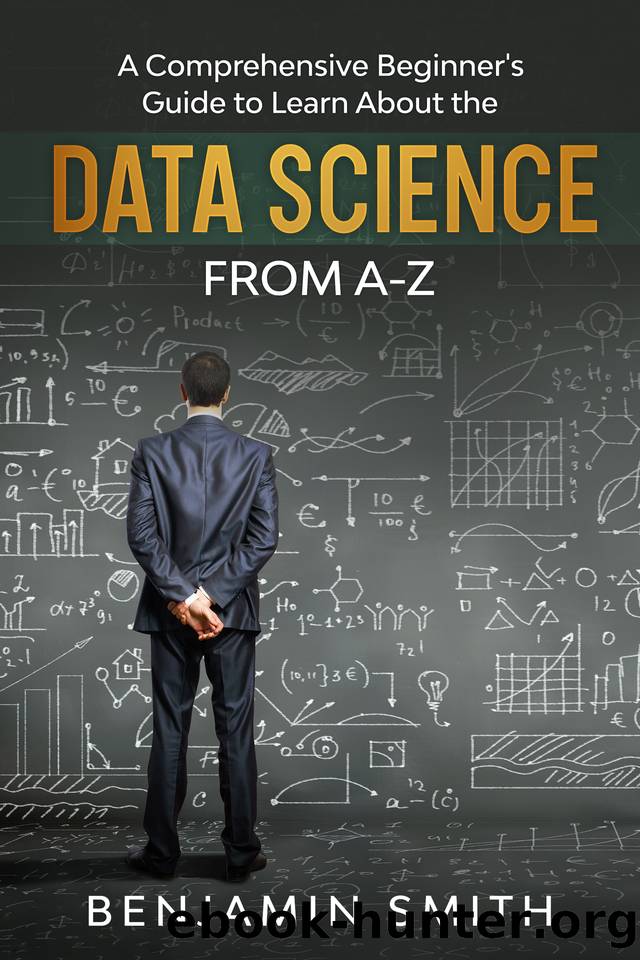DATA SCIENCE: A Comprehensive Beginner’s Guide to Learn About the Realms of Data Science from A-Z by Smith Benjamin

Author:Smith, Benjamin [Smith, Benjamin]
Language: eng
Format: epub
Published: 2020-04-25T16:00:00+00:00
Generalizes fairly well to data that is new to it
To create such a model, we need something else in addition to a modeling technique, and that is ‘error measure,’ which we briefly discussed in the previous chapter. Usually, this error measure is paired with a validation strategy to properly validate the model as well.
By now, we already know that the most common uses of machine learning in data science are regression and classification. As such, the popular error measures for both of these cases are mean squared error and classification error rate, respectively. In the classification error rate, we receive an error report, which represents how your model performed on the test data, i.e., how many observations have been mislabeled (the lower percentage is better). In the mean squared error, it tells us the average percentage of the model’s predictions error. However, it has one drawback. Faulty predictions can be in two directions and squaring the error cannot cancel out the wrong prediction in one direction with another wrong prediction in the other direction. For instance, a model’s prediction overestimates the next month’s turnover by a value of 5,000. This wrong prediction cannot be canceled out by the model’s prediction underestimating the next month’s turnover by the same value of 5,000. Furthermore, squaring the errors has one more problem, and that is large errors become even heavier than they would normally be without being squared. Although small errors can shrink (if they are less than 1) or remain at the same level.
There are several validations techniques available for use, but the most common techniques used are:
“Dividing your data into a training set with X% of the observations and keeping the rest as a holdout dataset.” This technique is the most popular.
Download
This site does not store any files on its server. We only index and link to content provided by other sites. Please contact the content providers to delete copyright contents if any and email us, we'll remove relevant links or contents immediately.
| Access | Data Mining |
| Data Modeling & Design | Data Processing |
| Data Warehousing | MySQL |
| Oracle | Other Databases |
| Relational Databases | SQL |
Algorithms of the Intelligent Web by Haralambos Marmanis;Dmitry Babenko(13733)
Azure Data and AI Architect Handbook by Olivier Mertens & Breght Van Baelen(7662)
Building Statistical Models in Python by Huy Hoang Nguyen & Paul N Adams & Stuart J Miller(7642)
Serverless Machine Learning with Amazon Redshift ML by Debu Panda & Phil Bates & Bhanu Pittampally & Sumeet Joshi(7520)
Data Wrangling on AWS by Navnit Shukla | Sankar M | Sam Palani(7283)
Driving Data Quality with Data Contracts by Andrew Jones(7277)
Machine Learning Model Serving Patterns and Best Practices by Md Johirul Islam(7011)
Learning SQL by Alan Beaulieu(6217)
Weapons of Math Destruction by Cathy O'Neil(6162)
Big Data Analysis with Python by Ivan Marin(5907)
Data Engineering with dbt by Roberto Zagni(4920)
Solidity Programming Essentials by Ritesh Modi(4551)
Time Series Analysis with Python Cookbook by Tarek A. Atwan(4384)
Pandas Cookbook by Theodore Petrou(4077)
Blockchain Basics by Daniel Drescher(3514)
Natural Language Processing with Java Cookbook by Richard M. Reese(3124)
Hands-On Machine Learning for Algorithmic Trading by Stefan Jansen(3030)
Feature Store for Machine Learning by Jayanth Kumar M J(2911)
Learn T-SQL Querying by Pam Lahoud & Pedro Lopes(2908)
